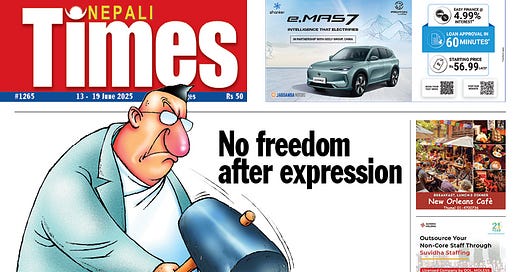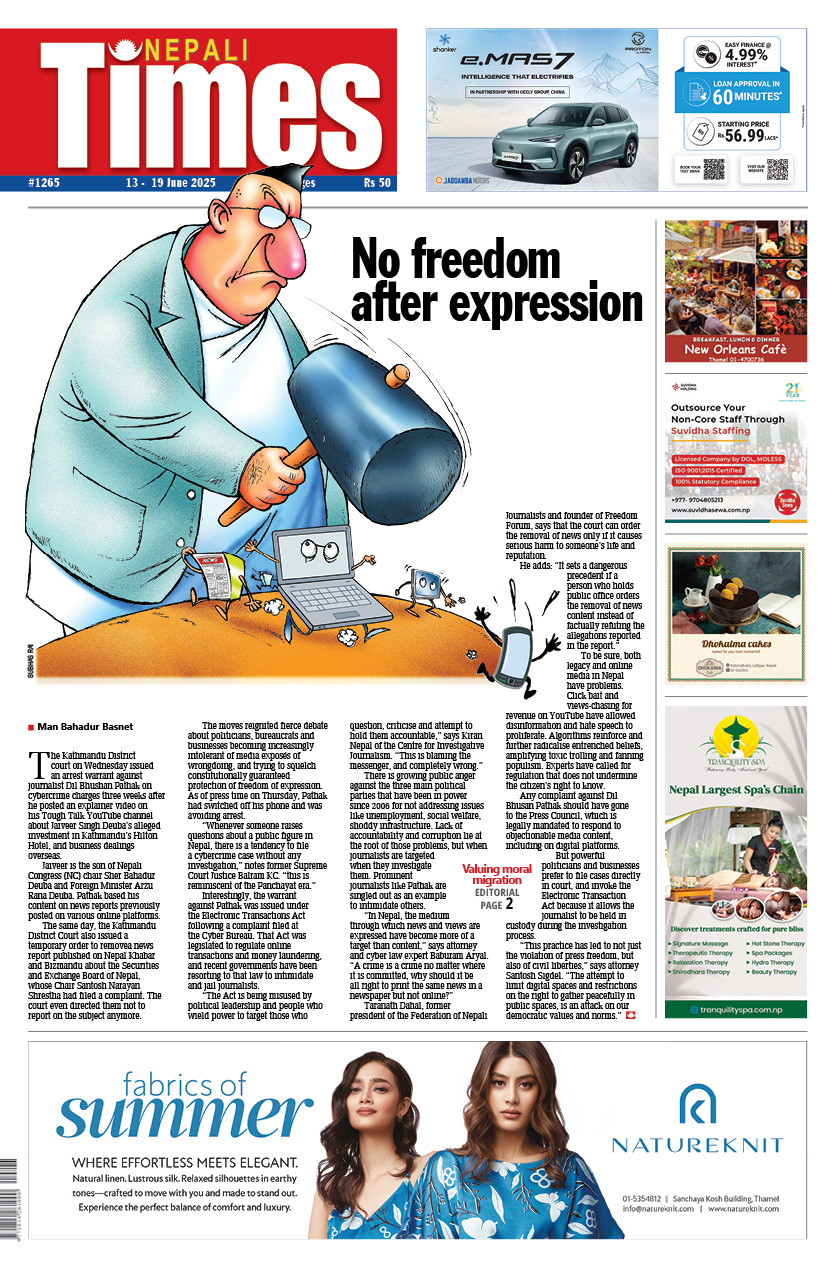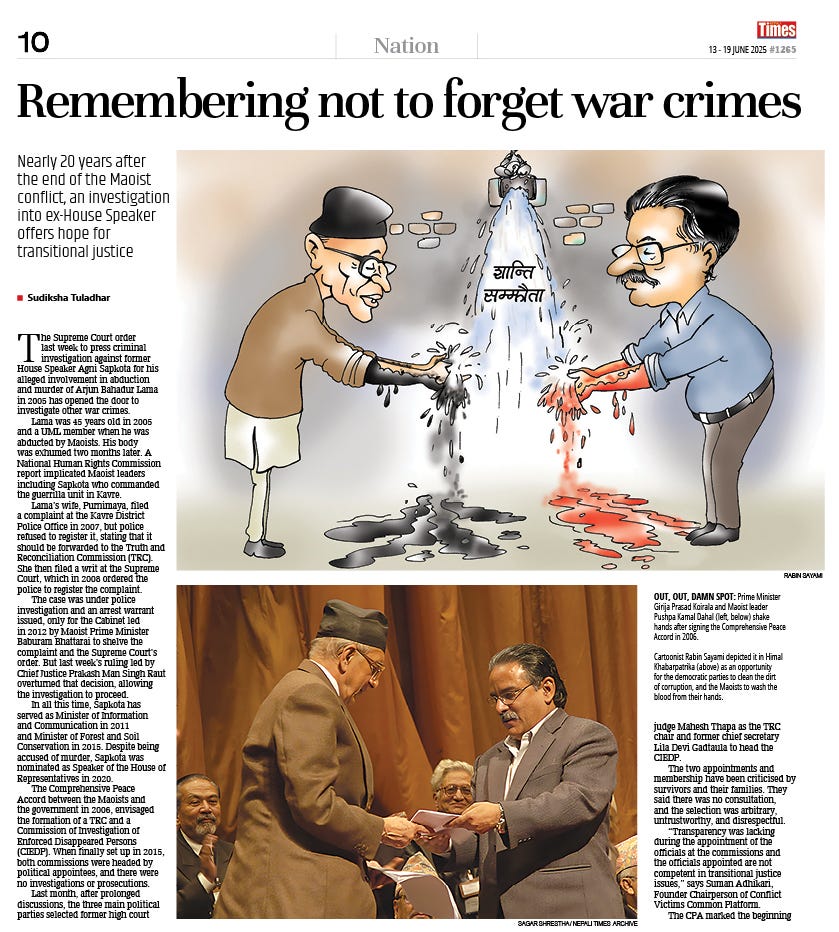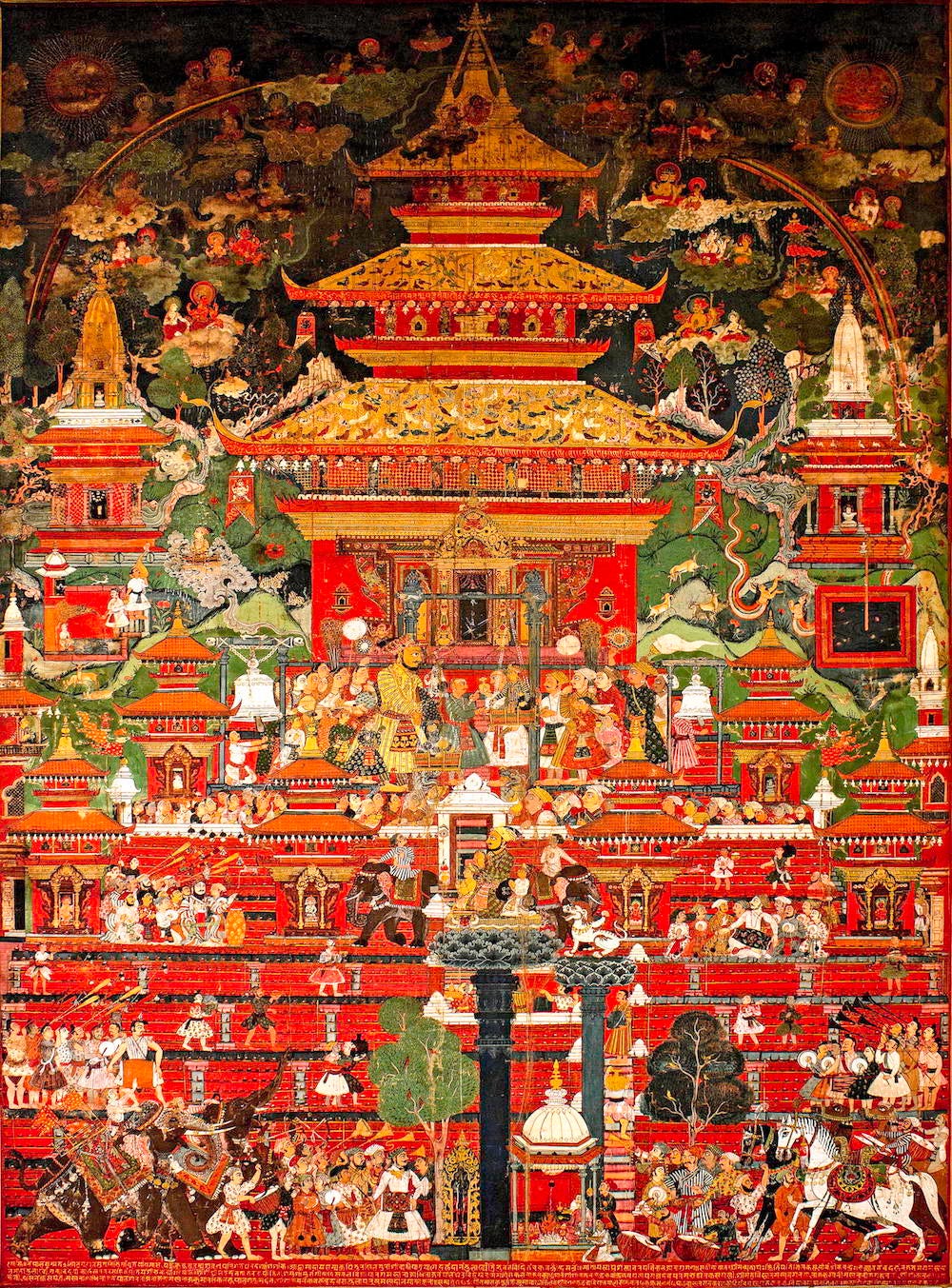Dear Readers and Viewers,
Nepal may be one of the few remaining open societies left in Asia, but our leaders seem to be learning from other autocrats in the region. They may even have secret midnight Zoom meetings to share techniques on gagging journalists.
That could explain the arrest warrant against a prominent journalist under Nepal’s Electronic Transaction Act, after which the right Honourable Foreign Minister berates the Publisher of a newspaper on the phone for daring to report on the case.
Blaming the messenger is not new: bearers of tidings have been hung by their own petard ever since Attilla the Hun. But we are civilised people now, and have moved away from such crude and ruthless methods. Today, our rulers have to abide by international covenants to which Nepal is signatory that allows YouTubers the inalienable right to impart gossip, innuendo and cat videos to an unsuspecting public.
Unlike our forebears, newspersons today exercise much greater self-confidence, self-esteem and self-censorship. The Minister of Disinformation and Communicable Diseases now requires journalists to acquire a license to lie and protect their right to write under the influence of the ruling coalition.
There is freedom of press in Nepal, but as our page 1 headline this week puts it, there is no freedom after expression. Check out the map accompanying the article from Reporters Without Borders — Nepal is an island of freedom in a sea of red. In the piece, reporter Man Bahadur Basnet of our sister publication Himalkhabar gives us a blow-by-blow of Nepal’s censorship in instalments.
On page 4-5 reporter Sudiskha Tuladhar recaps America’s crackdown on its universities, and how that is affecting Nepali students. Many of those already in the US did not even take the risk of leaving for summer holidays, and instead of coming to Nepal they went to Niagara Falls.
Sudiksha Tuladhar also has an explainer on page 10-11 of Nepal’s transitional justice process, and how the two former enemies who are now in government are reluctant to prosecute heinous conflict era excesses (Remembering Not To Forget War Crimes).
In her regular column Labour Mobility, Upasana Khadka praises a Nepali overseas job placement company which was recognised by the International Recruitment Integrity System (IRIS) for not cheating fellow Nepalis. Alas, what should be the norm has become an exception (Valuing Moral Migration, page 2).
Readers may want to look at the hardcopy or click or the PDF version of Nepali Times to feel the full impact of Mani Lama’s photography of the Lo Monlam Chenmo festival during the holy month of Saga Dawa on the page 6-7 centre spread (Million Mantras in Mustang).
And you could also go to the PDF to get the full picture of a 500-year-old paubha painting stolen 30 years ago from Kathmandu, and which is now in storage at a Paris museum. Art curator Shaguni Singh Shakya tells us why this is such an important heritage item, and should be returned to Nepal (Priceless Paubha in Paris, page 9).
We will have more in the next edition of Nepali Times about the Recovery of Cultural Heritage international conference being held in Patan next week (page 9).
Enjoy the rains.
Kunda Dixit







